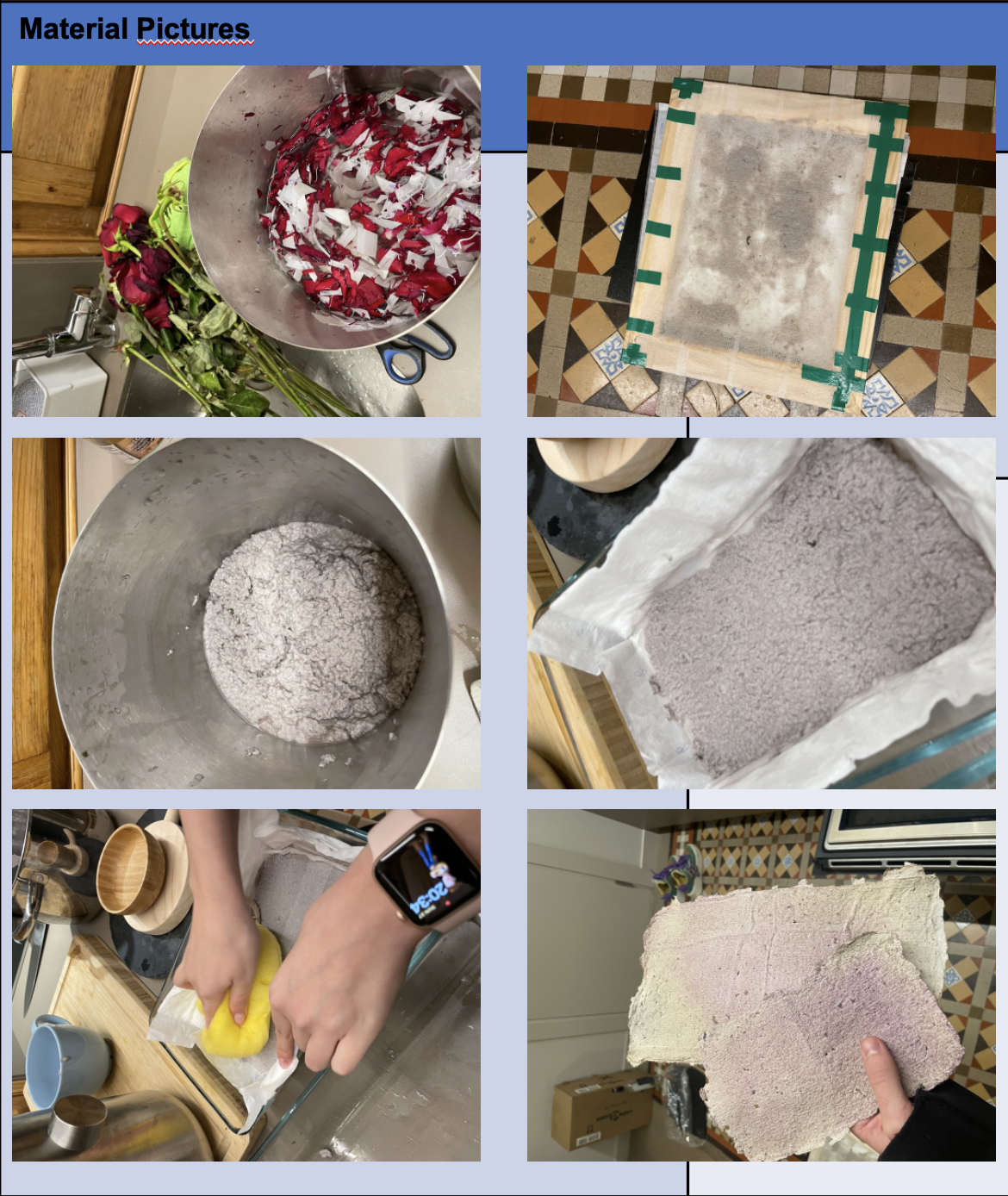This first week of Exploring Emergent Technologies discussed the topic of biomaterials though the course Remixing Mateirals. Lara Campos, an argentinian designer with an extensive experience in creating and using biomaterials, was in charge of the workshop and during this first session she gave us an introduction to the topic.
Some of the personal impressions included the importance if feelings and perceptions associated with the use of biomaterials. Since the material is not widely accepted, lots of people associate bad feelings such as disgust to biomaterials since a lot of biowaste is used. Therefore, when designing, it is very important to consider the target audience and the purpose of your design.
She also explained to us the basics of the composition of every biomaterial: a biopolymer, a plasticizer, the additives and the solvent. Each of these components has different alternatives one can use, that of course will give many diverse properties to the biomaterials we are cooking. We also had the chance to touch and analyse some biomaterial samples Lara had brought and think of some uses we could give them.
One of the things I was impressed with the most was how Didac (one of the classmates) developed the amphitheater ashtray using biomaterials. I take note of this project to develop something similar in the future.
What are the materials
1. The first material on the left is a 'hair biomaterial'.
2. The second sample on the right is based on 'kiwi' biowaste.
How was it fabricated?
1. Moulding in flat surface
2. Moulding in flat surface


Where does it come from?
1. Natural resources Human hair
2. Natural resources Kiwi
What is it made of?
1. Human hair + AlginateWater based
2. Kiwi skin + Agar + pigments Water based
How can the material be manipulated?
1. Resistant Translucent Seal, Sew, Assemble...
2. Resistant Translucent Seal, Sew, Assemble...
What could you fabricate with it?
1. Garments, Decoration, Lamps
2. Garments, Furniture, Decoration Lamps, Book Binding covers, Phone case, Toys
What kind of emotions has provoked you?
1. Disgusted
2. Terrenal, warm, grounded
Suzanne Lee
Growing your own clothes seemed like a crazy idea to me I’d like to experiment with since I’m quite interested in the world of fashion.
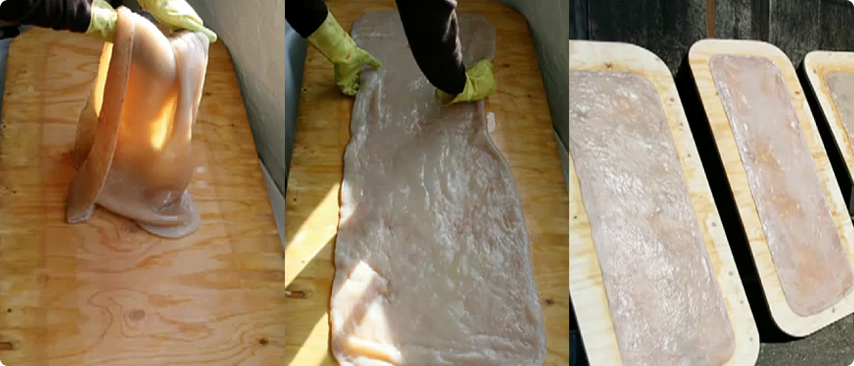
Dasha Plesen
I was competely blown away by the surreal visuals mixed with relating materials to religion, science and art.
Moreover, creating a living organisms on something as mundane as shoes opened my mind more.
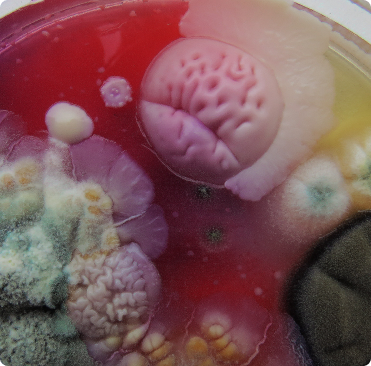

I’ve prepared lots of additives over the weeks which I cleaned, dried in the oven, and grinded to various degrees depending on the final form I wanted to experiment with.
With this project I’ve adapted a material-driven approach which served as a way for me to learn more about the cooking process and the potential of different additives on the final form.
1. “Agar agar” as a biopolymer
2. “Glycerin” as a plasticizer
3. “Water” as a solvent
Recipes [from left to right]
1. 160 ml water; 8ml glycerin; 6gr agar agar; 5 splashes of tea leaves, pomelo and tree leaves.
2. 250 ml water; 14ml glycerin; 10ml of red wine; 15gr agar agar; 3 splashes of pomelo & 3 tree leaves & 1 splash of pistacho & 1 splash of garlic.]
3. 250 ml water; 14ml glycerin; 3ml of vinegar; 15gr agar agar; 3 splashes of pomelo & 1 splash of tree leaves.
4. 120 ml water; 4ml glycerin; 3gr agar agar; 50ml of red wine; 2 splashes of mango & 1 splash of tree leaves & 1 splash of chilli.
5. 120 ml water; 4ml glycerin; 3gr agar agar; 25ml of red wine; 5 splashes of mango & 2 splashes of tree leaves & 2 splashes of tangerine.
6. 120 ml water; 4ml glycerin; 3gr agar agar; 4 splashes of coffee grounds.






Technical
1. Flexible
2. Elastic
3. Soft
Functional
1. Translucent
2. Recyclable
3. Reusable
Emotional
1. Disgusted with most
2. Calm with coffee grounds
3. Excited to touch and see how flexible they were
4. Joyous with some which were more colourful (wine samples)
Applications
The first application I explore was to empower painters to take back the process of designing their own canvas.
Therefore, some of the molds were rectangular whilst others were in a form of a face (influenced by picasso style paintings).
Some other applications could be:
1. Bio bags for flexiblity (if made more resistent)
2. Decoration lamps, etc. due to being translucent

Giving canvas design back to the artists.
The idea from this project stemed from a conversation with painters who wanted to explore different ideas for canvas materials.
I explored the use of recycled/waste paper together with other additives such as rose petals, leaves, etc. [full recipe at the bottom].
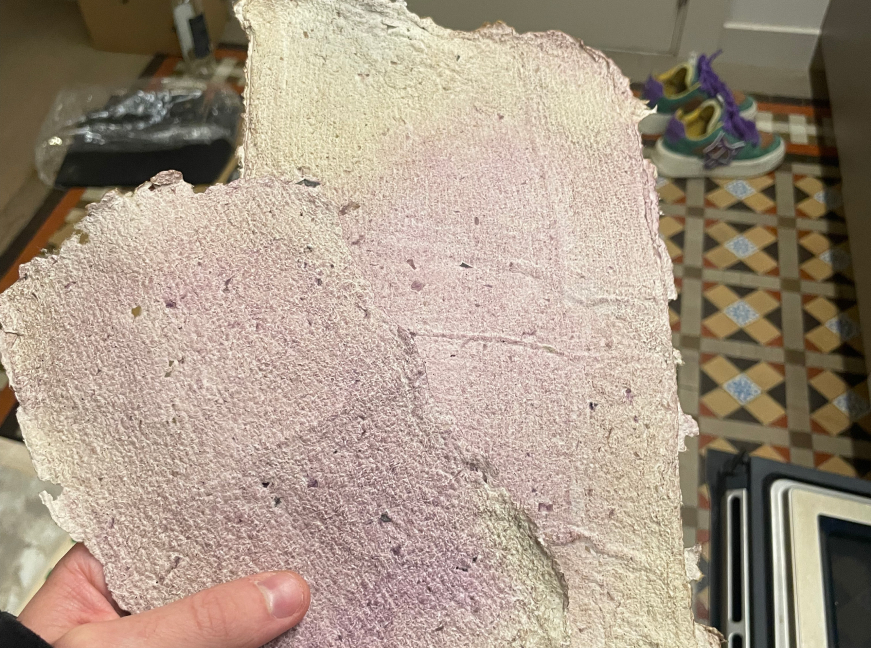
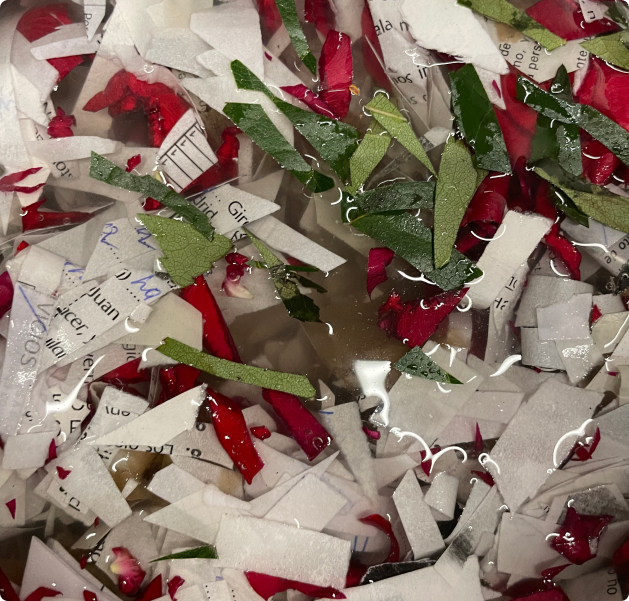
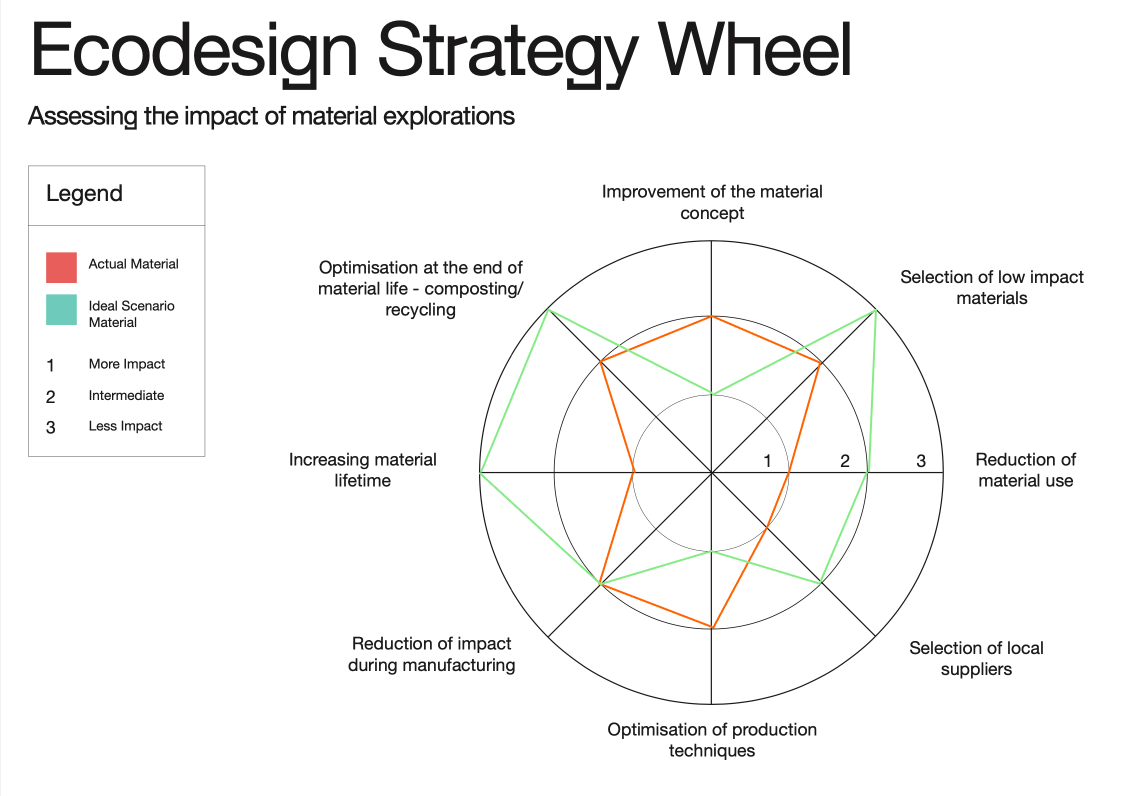

Which are strength and weaknesses? [SWOT]
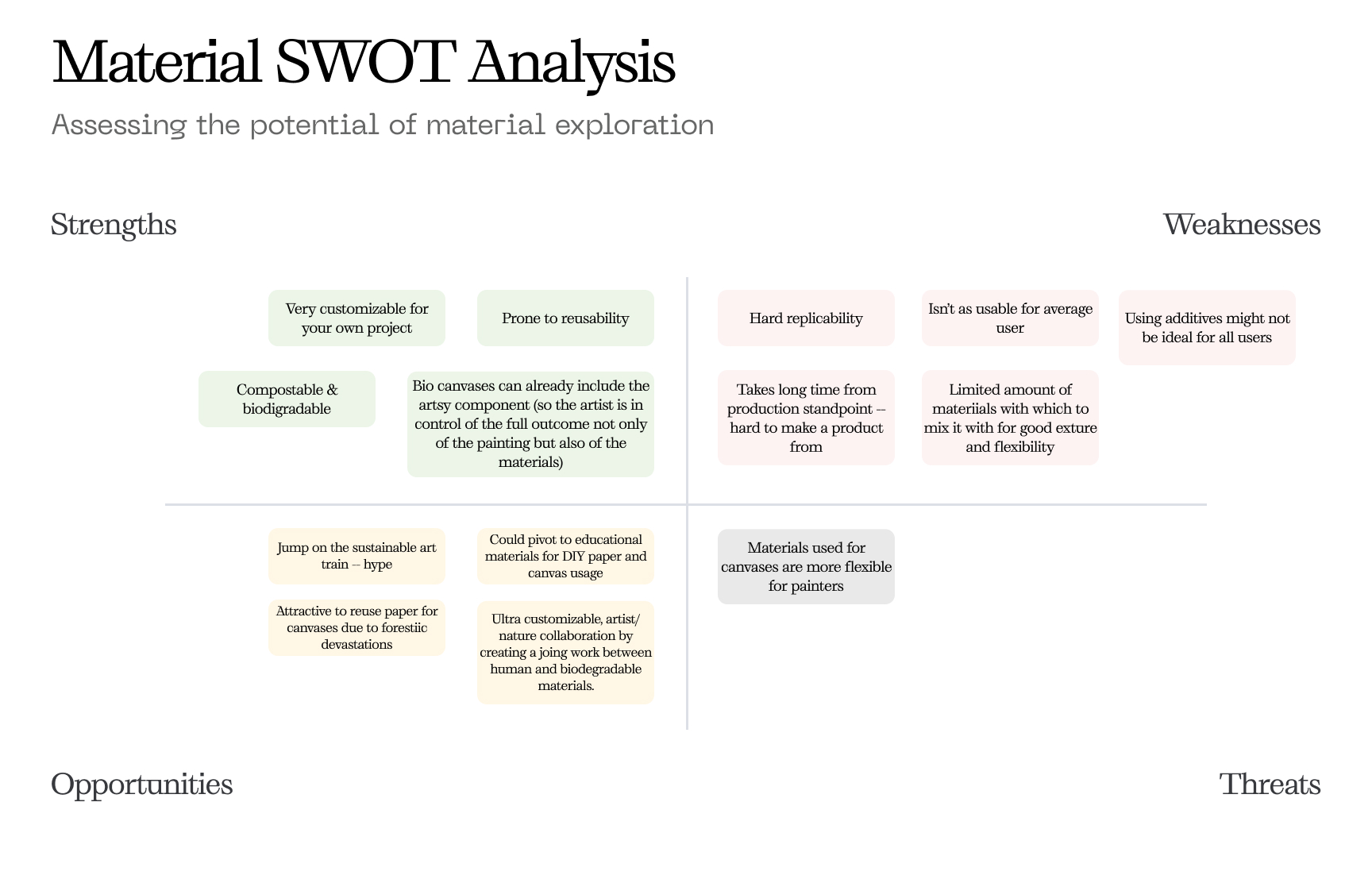
Reusability
Reusing paper has huge environmental potential. Any paper you would ever need can be easily found in office spaces, friends, trash, etc.
Customization
Both experiments have been an investigation into empowering artists to take back the control of their canvases by designing the materials and shapes.
Art
Why only limit your art piece to painting itslef? Why not use canvas materials as part of the painting?
What could the material be used for? [applications]
Full recipe

